Office 365 vs Google Workspace
After reading this blog post you should be able to have a well-formed opinion on what would be the best choice for your business between Office 365 and Google Workspace?
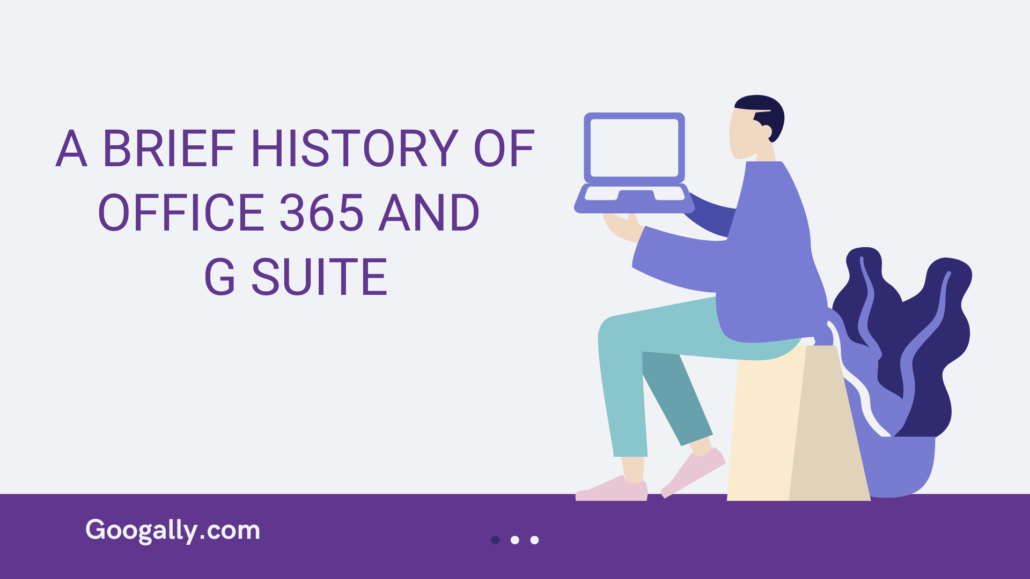
There was a time when the ancestors of Office 365 – the various versions of Microsoft Office – enjoyed complete monopoly.
Whether you liked it or not, you were stuck with it.
Yes, there was Lotus Notes (you could easily be in your kindergarten then) and for Mac fanatics, there is iWork, but ever since its inception (right from DOS days) MS Office has pretty much ruled the roost.
Till the arrival of Google Apps, the daddy of (or mother of, if you’re a feminist) Google Workspace, that is.
I wouldn’t say that Google Apps totally turned the tables on MS Office, but it was certainly a game changer.
Of course, the phase of cluelessness Microsoft was going through also helped Google push its Google Apps suite with greater effectiveness.
When Google Apps was launched, Microsoft was still grappling with the concept of the World Wide Web and its nuances. Microsoft didn’t take the Internet and its implications seriously enough.
Well, that’s history. Google has grown as one of the biggest Internet companies and Microsoft too has reconciled to the fact that the days of the desktop are over, and people prefer all their files and apps in the “cloud”.
Over the years, MS Office has metamorphosed into Office 365 and Google Apps has been rechristened as Google Workspace.
Both Office 365 and Google Workspace are office suites – collective packages of software applications and associated services that can be purchased or subscribed to, in a package.
Once you subscribe to one of the services (or both) you can use various apps that allow you to create, share and collaborate on documents, spreadsheets and slides, and carry out a slew of business activities.
In the olden days you had to purchase the entire MS Office Suite, which could be an expensive affair. It was a bulky piece of software that you needed to install after purchasing a DVD or downloading it from the Microsoft website.
Google Workspace (even when it was Google Apps) on the other hand, has been subscription-based from the beginning itself. For a nominal monthly or yearly fee, you can use all the components of Google Workspace.
Following suit, MS Office too started a subscription-based service and began to be called Office 365.
Although you still have to install the entire set of traditional apps that come with MS Office/Office 365, like Google Workspace, you can also use the web version of Office 365 and consequently, all the collaboration facilities that you get in Google Workspace, you also get in Office for 65.
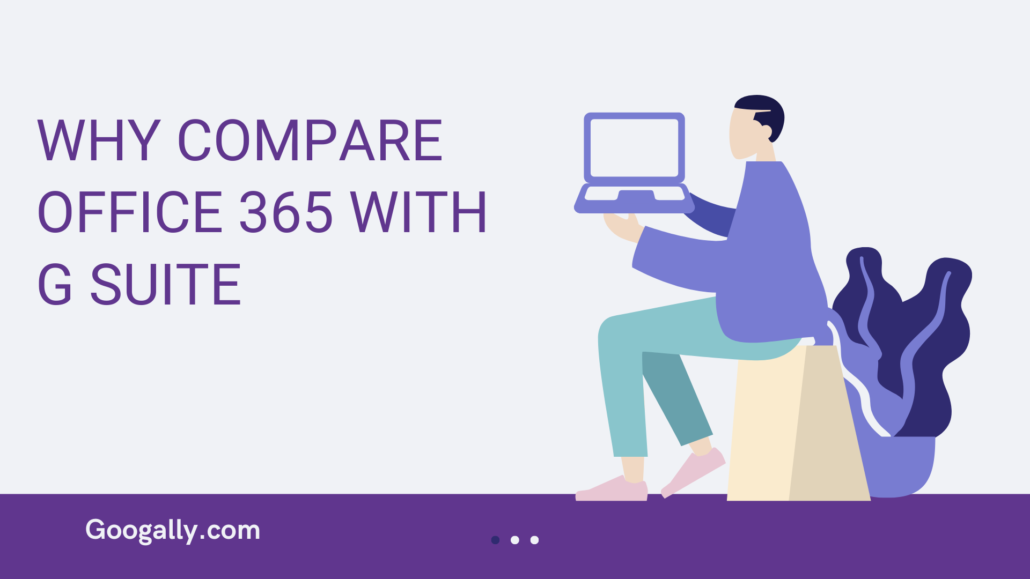
Why compare?
So that you can make an informed decision.
Of course, you can choose to try out both the software solutions and then learn from your own experience.
I can literally say that I have worked in the proverbial trenches, having extensively used both Office 365 and Google Workspace.
Consequently, whatever I share here, is first-hand experience, and if my experience can save you money and time, it will make me happy.
The purpose of this write-up is not to recommend one office suite over another because that won’t be fair.
They both have their pros and cons.
I will simply tell you what all features Office 365 and Google Workspace have, and how these features fair in terms of solving particular business problems.
After that, it’s up to you. Here we go.
First, the feature list.

Broadly, Office 365 gives you the following apps when you install it, use as individual apps on your mobile phone, or use it on the web:
- Word
- Excel
- PowerPoint
- Access (PC only)
- Publisher (PC only)
- Sway
- Forms
- Outlook
- One Note
- One Drive
MS Word, as you must know, is an iconic word processor. If you have used a computer (before Google Apps) and if you have dealt with digital documents, there is a remote possibility that you haven’t worked in Microsoft Word.
Similarly, there is a great chance that you have used Excel in your office or even at home. This is a spreadsheet software that allows you to organize data in rows and columns and then apply various mathematical and statistical functions for data and financial analysis.
PowerPoint is for creating presentation slides.
Microsoft Access has also been around since the beginning of Microsoft Office. You use it only if you deal with databases. Since it’s a bulky piece of software, most of the people avoid installing Microsoft Access during the days when you could selectively install Office applications.
Publisher, as the name suggests, is a toned-down version of something like QuarkXPress or CorelDRAW. You can design brochures, greeting cards, reports and newsletters with Publisher.
If you find PowerPoint bulky and an overkill, then you can use Sway. It is a light presentation maker. It is completely template based and you can quickly cook up attractive presentations using an online interface.
With forms you can create, well, forms. With these online forms, you can gather data, and conduct polls and surveys. You can download an Excel sheet to view the information and use it for analysis.
MS Outlook is of course for handling email.
One Note directly competes with Evernote. It is your digital notepad. You can use it to take notes and save information and research.
One Drive is cloud storage and the storage space that you get differs according to your Office 365 subscription package. The basic account gets 1 TB of cloud storage space.
With these assortments of apps, you also get Microsoft Teams with which Microsoft intends to compete with Slack.
You have the age-old Skype for VoIP and even for making local and international calls for which you may have to purchase calling credits. There is Skype for Business, but this is an add-on for which you have to pay extra.
You get a business email for every user that you add to your Office 365 account. You can use your business email accounts either with Gmail or Outlook.
For individual user accounts you can set up calendar and scheduling under your own domain.
Every user can use the Office apps on 5 devices including PCs, laptops, Macs, tablets and mobile phones.
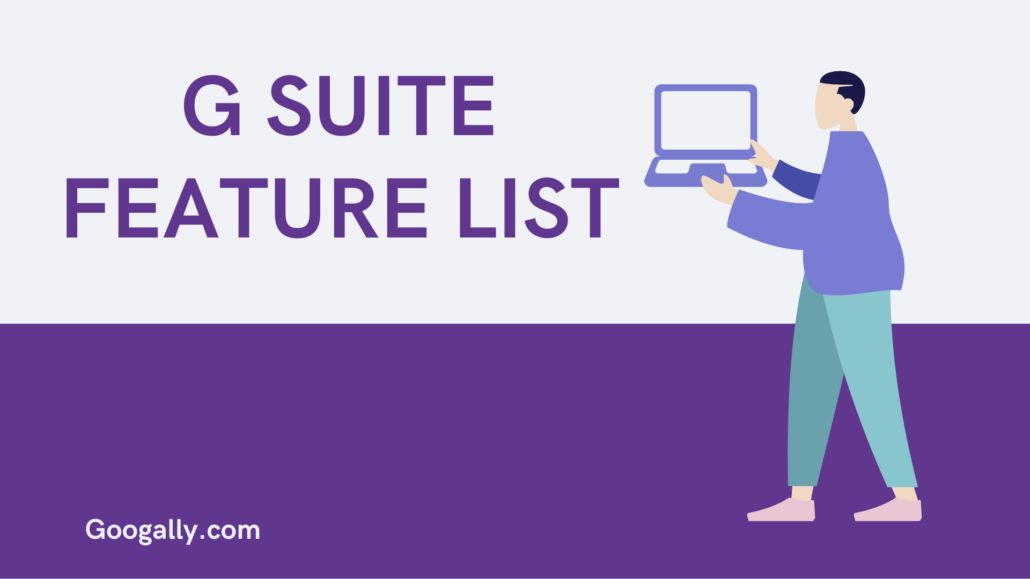
Google Workspace is completely web-based. On PC and laptop, you can simply access everything in the Google Workspace kitty through your standard web browser.
If mobile is your thing, you can install individual apps.
The Google Workspace bundle contains
- Google Docs
- Google Sheets
- Slides
- Google Forms
- Google Keep
- Google Hangouts
- Meet
- Google Chat
- Google Sites
- Google Drive
- Gmail interface for your business email
You can set up a business email for your domain. For email you can use the regular Gmail interface even for your business email.
You can run all your apps and other Google Workspace features under your own domain.
Google Docs is for word processing.
Google Sheets is for creating, maintaining and sharing spreadsheets.
You can create presentation slides with Slides.
Google Forms can be used in various ways: you can use them as contact forms, and you can use them for gathering user data for surveys and polls. You can save the Google Forms data in a Google Sheets document.
Google Keep is like One Note or Evernote. A completely web app and you can use it to collect and organize notes. It is not as elaborate and feature-rich as One Note and Evernote, but if you need a simple solution to organize your information this is a handy tool.
Google Hangouts Chat can be termed as the equivalent of Skype. You can use it for videoconferencing and for general chatting. The Google Voice add-on for Google Hangouts allows you to make local and international phone calls to landlines and mobile phones over VOIP. The local and international phone calling facility comes free if you have a paid Google Workspace subscription [Amrit’s note: this needs to be confirmed].
Ever used Zoom? Google provides the same service in the form of Meet. Using this tool, you can have online meetings using a web cam or your mobile camera.
Google Sites can be used for sharing and organizing information, preferably over your intranet. You can use Google Sites to upload user guides and documentation for your employees and other general messages (something like a message board). Shouldn’t be confused with creating full-fledged websites like Googally.com.
With the most basic plan you get 30 GB of cloud storage with Google Drive.
The biggest difference between Office 365 and Google Workspace is that you can use all the basic apps like Google Docs, Google Sheets, Gmail (gmail.com, not your domain), Hangouts Chat, Meet, Google Keep and Google Calendar for free if you have a Google account.
You can use most of the Office 365 apps only if you have subscribed for a package.

Collaboration is a part of Office 365, but it’s like an afterthought. Office 365 hasn’t been built as a collaboration tool unless you use an add-on like SharePoint.
Having said that, you can use Office Online to collaborate on documents, spreadsheets and presentations. Multiple people can work on a single document from different places.
Once a document is opened, and if multiple people are working on the same document, you can see, in real-time, which edits are being done by whom (their names pop up)
You can either work on the documents in real time or you can use One Drive to store your documents in the cloud and make them accessible to other team members.
You can collaborate using your mobile phone, tablet or PC/laptop. Collaboration is possible between Office Online users and people using Office applications on their desktops.
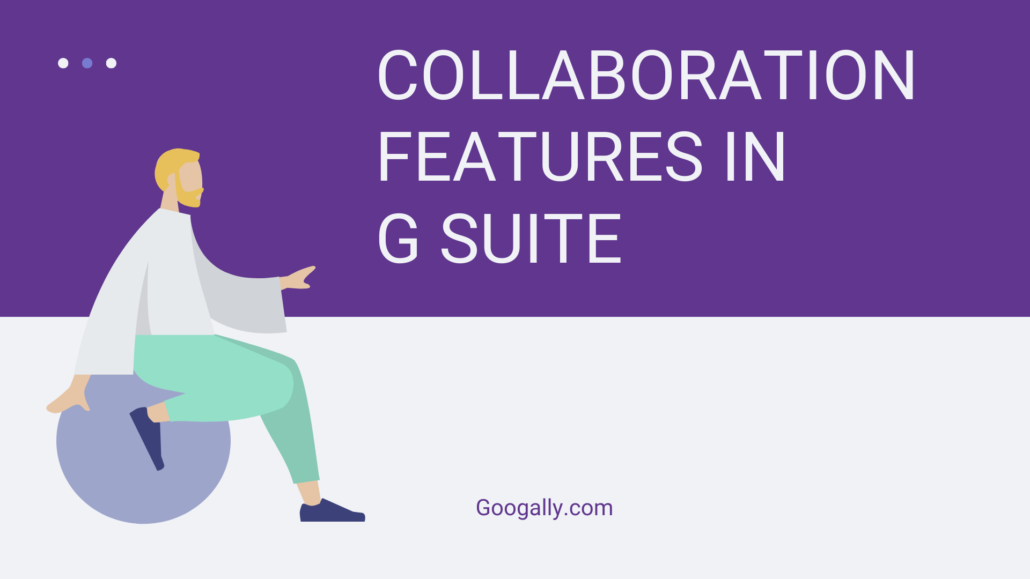
Google Workspace is the pioneer in the realm of collaboration.
People were collaborating on Google Docs and Google Sheets from the word go.
Multiple people can work on the same document, spreadsheet or presentation at the same time, and multiple versions are saved for individual users so that from a particular time, any version can be retrieved, for any user.
You can see right on your screen how many people are working on the document you are working on, and you can also see which portions are being edited or updated by which user.
The simplest form of collaboration is storing your files in Google Drive so that people who have access to your Drive can work on the files.
Collaboration doesn’t just mean working on documents, it also means being able to organize and coordinate meetings and even have face-to-face discussions.
You can organize meetings and events using Google Calendar which has been an integral part of Gmail for long.
You can have a multi-member video chats using Google Hangouts and if you prefer text chat, you can use Google Chats.
Online meetings can be organized using Meet, as briefly described above. Once you have scheduled a meeting, you can send a “meeting code” to people whom you would like to join, or you can simply send them a uniquely-created link. Only people who have the code or the link can join the meeting.
To collaborate through email, you can create email groups (famously known as Google groups). After creating the group, you can either manually add people (their email ids) are people can join the group themselves.

Using most of the Office 365 apps is like using a bus when you can use a bicycle.
For example, if you quickly want to create a small document on a slower computer (is there a faster Windows 10 computer, by the way?) launching Word can be a regular exercise in waiting.
It tests your patience every time you start it.
The same holds true for all Office 365 apps.
Sorry Microsoft, your own apps don’t feel at home inside your own operating system.
Every app comes with its own bulky paraphernalia, and Microsoft seems to be obsessed with loading every app with features that you use once in 100 years.
Another irritation is Microsoft Access. If you want to install Office 365 on your desktop, like fate, you cannot avoid installing Access. You never use it, but like a dark force, it resides on your computer.
The previous versions of Microsoft Office allowed you to install individual software applications. If you just wanted to install Microsoft Word, you could install Microsoft Word.
No longer is the case. There is just one single setup file and then it is just “my way or highway”.
Although, reluctantly, Microsoft has been inching towards a minimalistic design, it is long way from optimizing its interface especially for MS Word and Outlook.
Even the web versions are bulky.
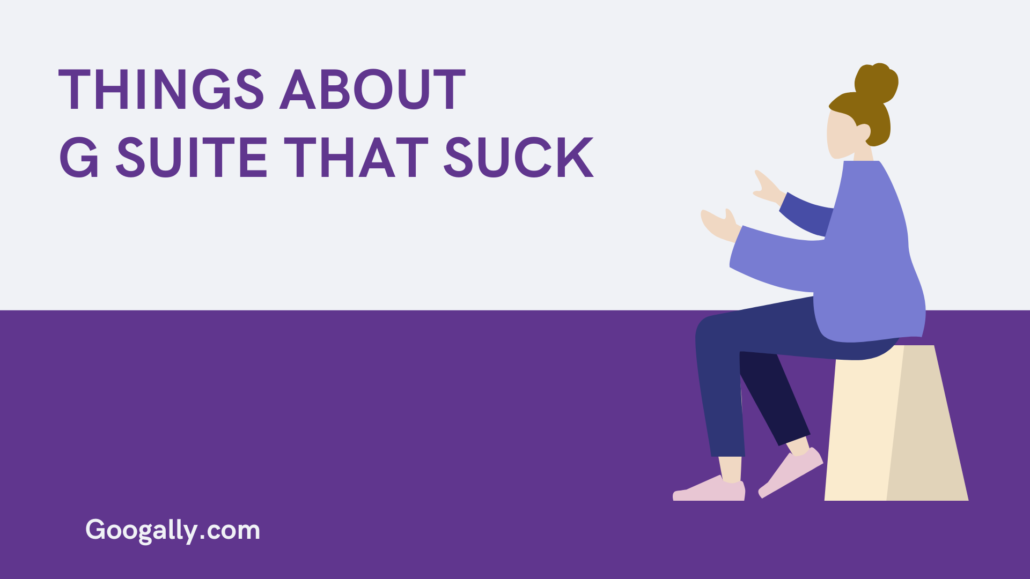
Frankly, there isn’t much you can find in Google Workspace that sucks and even if there is something, that is just a matter of opinion and taste rather than features and capabilities.
For example, from ground up, Google Workspace has been designed and developed to function within the browser. Hence, all its capabilities depend on the capabilities of your browser, specifically Google Chrome.
This, in some way, stops you from using the native capabilities of your operating system (PC and laptop), but then again, one of the primary reasons why you go with Google Workspace is that it is very lean and flexible, and you don’t need to install anything on your desktop.
You may feel that you get less storage than Office 365: in the beginning plans you get 30 GB
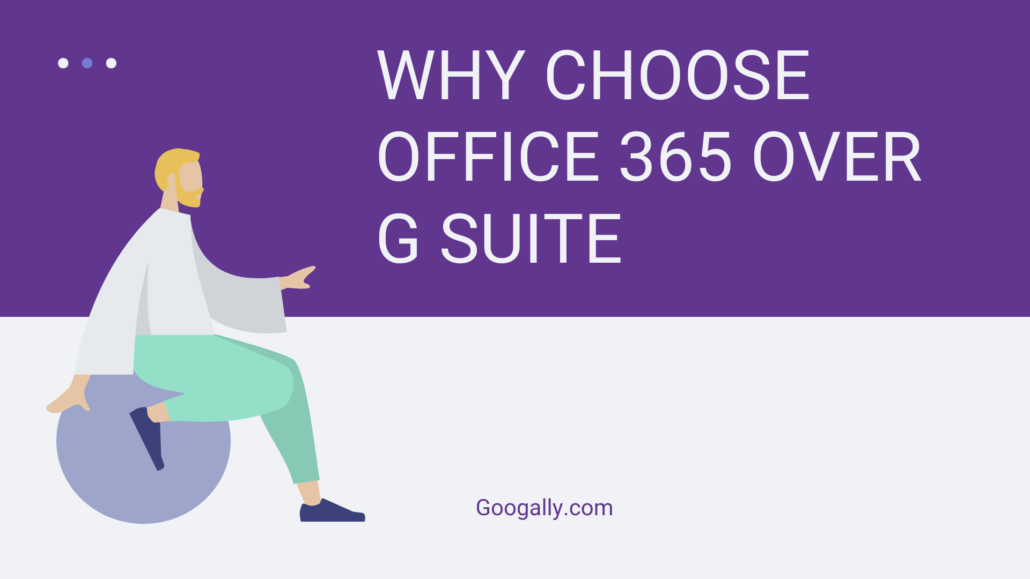
Office 365 looks fancy.
If you want to install everything on your desktop rather than working through a browser window, then of course, Office 365 is your thing.
If you don’t mind installing a few gigabytes of software on every machine then yes, you should choose Office 365 over Google Workspace because you don’t get to install anything locally with Google Workspace.
Since most of the Office 365 apps don’t work smoothly on mobile phones (even the email app leaves much for desire), this is something that isn’t going to bother you if your employees don’t check email on their phones and tablets.
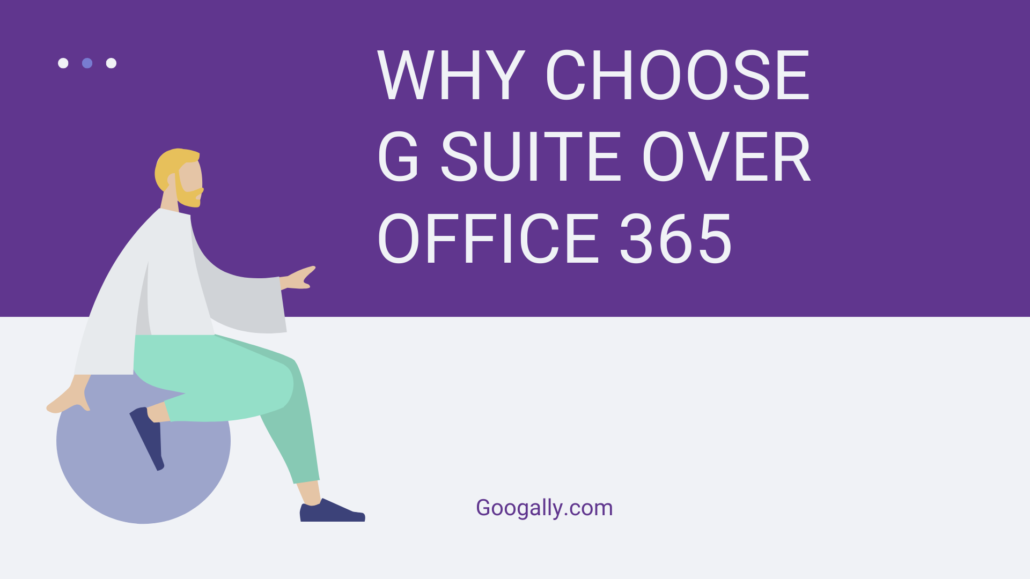
Whereas Office 365 is for bells and whistles, you would choose Google Workspace over Office 365 if you just want to get things done and then move on.
Besides, all the Google Workspace apps have been made for the web and the mobile generation so every app that you get with Google Workspace works like a charm on every mobile device, which you cannot say about Office 365.
Take for example checking email. Whether you use an iPad, an iPhone or any of the mid-range to high-range Android tablets and mobile phones, you will love the Gmail app. As you already know, even for your professional email, when you subscribe to Google Workspace, you can use the default Gmail interface.
You want to create documents to provide information to someone. You want a quick online tool to do so, and Google Docs lets you do that.
You want to quickly create a slide to communicate an idea to one of your prospects. Slides allow you to do that just through a browser link.
Everything is just a URL away.
Suppose you need 1500 employees to use email; would you rather have them quickly use the Gmail interface or get embroiled with hundreds of Outlook installations on individual machines?
Whether it’s the intuitive and simple Gmail interface or Google Docs, Google Sheets and Google Slides, Google Workspace pushes you towards creating powerful content rather than spending time on a slew of features that you’re never going to use.
One reason why all the Google Workspace apps work like a charm on Android phones is because the Android operating system has been built by Google and hence, all the apps by Google are able to use the full potential of the mobile operating system.
Even on your desktop Google Workspace simply works. It just takes a browser window. No installation needed. The moment you sign in everything becomes available to you.
Then of course there is unparalleled security that Google brings to your inbox, Google Drive and documents.
Another great thing that I find in Google Workspace is that in Gmail you can create labels and organize your email messages using labels and tabs, a very important facility that is not available in Outlook, strangely.
Real-time syncing is actually real time in Google Workspace (there is a lag time in Office 365 apps). You can work on a document on your mobile phone and then suddenly you can switch to your laptop and continue working on the same document – the editing that you have just done on your mobile phone is immediately available across all devices.
Want to save money on local and international calls? As explained above, with Google Hangouts and Google Voice, you can make free local calls and if you need to make lots of calls, this can be a big money saver.
Depending on your country, you can also make free calls on landline and mobile numbers, and if your carrier doesn’t give you unlimited calling plans, you can easily imagine what a difference this can make.
Although you can call landlines and mobile phones using Skype, but that is for Skype for Business for which you have to pay extra and otherwise, for Skype, you need to keep chasing calling credits.
Another reason why you would choose Google Workspace over Office 365 is the pricing structure. This brings us to the next section.
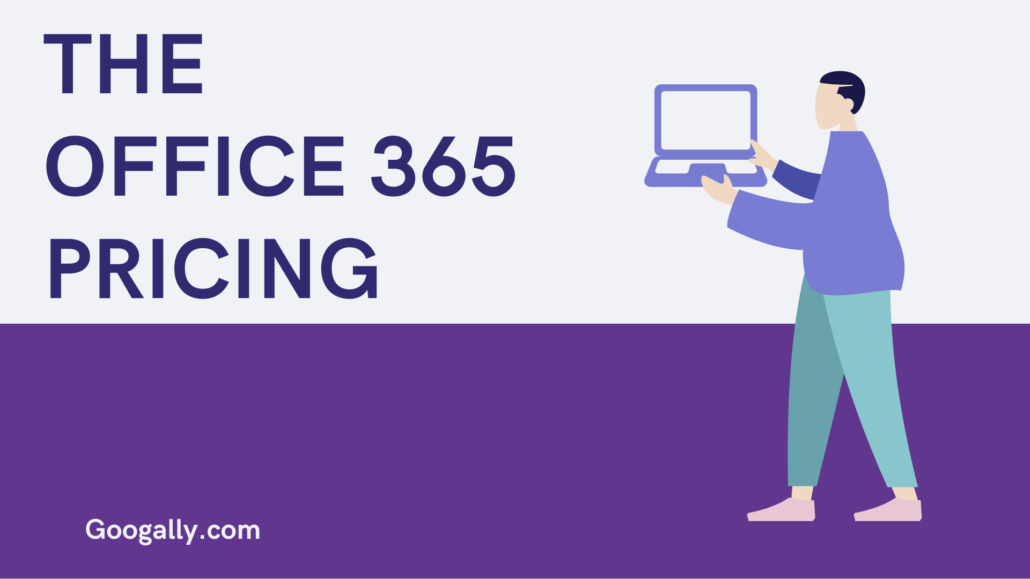
Office 365 has many pricing plans for you. Broadly, they can be described as:
Plan name
Monthly agreement per user (paid every month)
Yearly agreement per user (paid dearly)
Office 365 Business Essentials
$6.00
$60.00
Office 365 Business Plan
$10.00
$99.00
Office 365 Business Premium
$15.00
$150.00
Office Enterprise E1
Annual only
$96.00
Office Enterprise E3
Annual only
$240.00
Office Enterprise E5
Annual only
$420.00
Office Enterprise Pro Plus
Annual only
$144.00
As you can see, Microsoft has tried to accommodate as many business requirements as possible. This can be confounding and a bit intimidating. Let’s briefly go through what all plan pricings entail…
The basic apps and basic facilities remain the same across the plans. For example, with every plan you get email ids under your own domain.
You get all the features mentioned in the “Office 365 features” section with an exception that for the “Office 365 Business Essentials” plan, applications like Word and Excel cannot be installed on the desktop but are available as mobile apps and web apps.
Office 365 business plans are available for small businesses with maximum 300 users.
The Enterprise plans allow you to have unlimited number of users.

Compared to Office 365, Google Workspace has a simpler pricing structure. It has just 3 price plans.
Plan name
Pricing
Google Workspace Business Starter
$6.00/user/month
Google Workspace Business Standard
$12.00/user/month
Google Workspace Business Plus
$18/user/month
In all the Google Workspace plans, you get the features listed in the “Google Workspace features” section.
The amount of cloud storage space that you get for each user varies according to your plan.
For the Starter plan, you get 30 GB for every user.
For Business and Enterprise plans, if the number of users in your organization are fewer than 5, then every user gets 1 TB of cloud storage space. If you have 5 or more users, every user gets unlimited cloud storage space.
With Business and Enterprise plans you also have “Smart search” across your Google Workspace setup. This is Google’s search technology available to you right inside your Google Workspace account under your domain.
You can use advanced search to find information within your organization and help-related answers from Google. With unlimited storage space and thousands of users working for your organization, “Smart search” can be an invaluable capability.
The other, advanced set of features available partially and fully with the Business and Enterprise plans is your ability to create apps using Google Workspace APIs, control over how much data can be accessed over different geographical locations, the level of data security, and enterprise-grade access control with security key enforcements.

As I have written in the beginning paragraphs, the purpose of this post is not to dissuade you from using Office 365 or Google Workspace. I’m pretty sure you know more about your business and your needs than I do.
I’ve simply presented the information and experience that I have had with both the office suites. I hope the information helps you and especially helps you make up your mind.
Related Posts
Explore Tips and Guides! Discover expert insights and practical guides for optimizing your Google Workspace experience with our informative resources.



